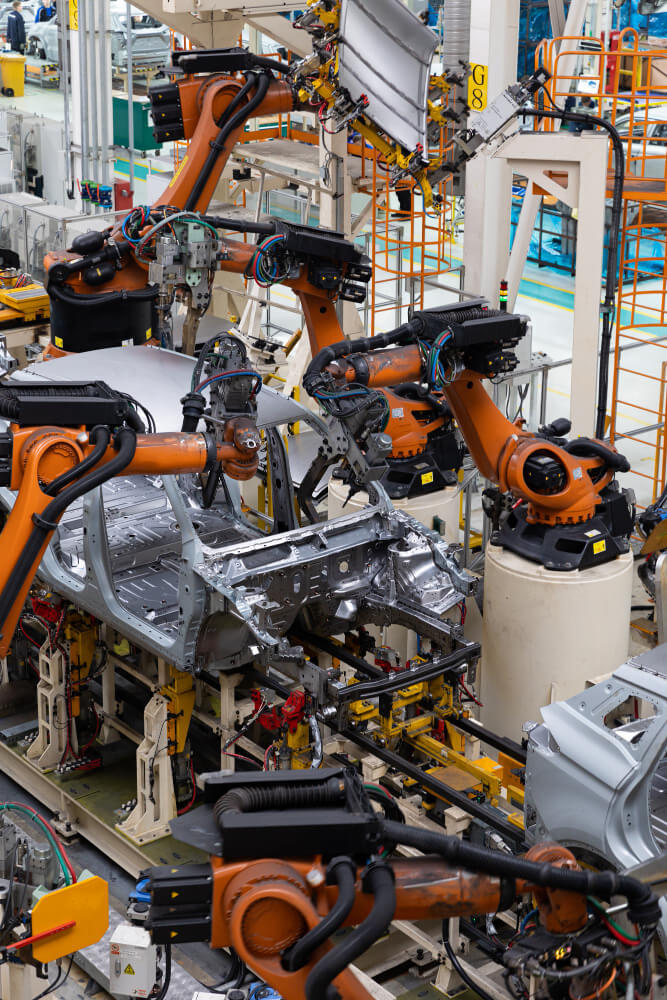
Automotive



Automotive
Automotive companies with operations in the US and/or EU must manage complex OT security challenges stemming from highly automated manufacturing environments, intricate global supply chains, and increasingly connected production systems.
Automotive factories rely on a vast array of OT systems—including robotics, programmable logic controllers (PLCs), and manufacturing execution systems (MES)—to maintain precision, efficiency, and safety.
Many of these systems were not designed with modern cybersecurity threats in mind, making them susceptible to attacks that could disrupt production lines, compromise proprietary designs, or introduce defects into safety-critical components.
Cyber threats such as ransomware, intellectual property theft, and tampering with robotic control logic pose significant operational and reputational risks.
At the same time, compliance obligations under standards like the US NIST Cybersecurity Framework, EU NIS2 Directive, and sector-specific guidelines such as ISO/SAE 21434 for automotive cybersecurity demand proactive risk management and robust OT security governance.
The rise of Industry 4.0 and increased reliance on Industrial IoT (IIoT) devices only expands the attack surface, requiring secure device onboarding, segmentation, and real-time monitoring.
To address these challenges, automotive companies must adopt a defense-in-depth strategy that integrates OT and IT security, emphasizes continuous monitoring, enforces strict access controls, and supports rapid incident response—while ensuring production uptime and global compliance.






